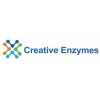Cat No.
NATE-0623
Description
Protein Kinase C (PKC) is a serine/threonine kinase that is activated intracellularly by signal transduction pathways that produce DAG from phosphatidylinositol diphosphate (PIP2) and phosphatidylcholine (PC) through the action of various activated phospholipases. Phorbol esters also stimulate PKC. At least 11 PKC isozymes have been identified that differ in primary structure, tissue distribution, subcellular localization, response to extracellular signals, and substrate specificity. The isozymes can be grouped into three subfamilies. Members of the first family require Ca2+ and phospholipid and include PKCα, βI, βII, and γ. Members of the second family are phospholipid-dependent but Ca2+-independent, and include PKCδ, ε, η, and θ. Members of the third family are not activated by either DAG or phorbol esters and include PKCξ, μ, and ι.
Abbr
PRKCD, Recombinant (Human)
Alias
PRKCD; MAY1; PKCD
Source
Baculovirus infected insect cells
Species
Human
Form
buffered aqueous glycerol solution; Solution in 20 mM HEPES, pH 7.4; 2 mM EDTA, 2 mM EGTA, 5 mM DTT, 100 mM NaCl, 0.05% Triton X-100, and 50% glycerol.
Enzyme Commission Number
EC 2.7.1.37
Molecular Mass
mol wt 74-79 kDa by SDS-PAGE
Purification
>95% (SDS-PAGE)
Unit Definition
One unit will transfer 1 nmol of phosphate to PKC epsilon substrate peptide in 1 min at pH 7.4 at 30°C.
Gene Name
PRKCD protein kinase C, delta [Homo sapiens]
Synonyms
PRKCD; protein kinase C, delta; protein kinase C delta type; ALPS3; CVID9; MAY1; PKCD; nPKC-delta; EC 2.7.1.37
GeneID
5580
mRNA Refseq
NM_006254
Protein Refseq
NP_006245
MIM
176977
UniProt ID
Q05655
Chromosome Location
3p21.31
Pathway
Alpha-synuclein signaling, organism-specific biosystem; Alpha6-Beta4 Integrin Signaling Pathway, organism-specific biosystem; Apoptosis, organism-specific biosystem; Apoptotic cleavage of cellular proteins, organism-specific biosystem; Apoptotic executionphase, organism-specific biosystem; B Cell Receptor Signaling Pathway, organism-specific biosystem; Ca-dependent events, organism-specific biosystem
Function
ATP binding; calcium-independent protein kinase C activity; enzyme activator activity; enzyme binding; insulin receptor substrate binding; metal ion binding; non-membrane spanning protein tyrosine kinase activity; nucleotide binding; protein C-terminus binding; protein binding; protein kinase activity; protein serine/threonine kinase activity





